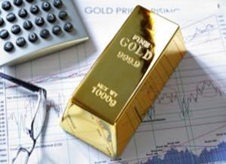US PCE Index Falls In September
 The Personal Consumption Expenditures Price Index decreased 0.1 percent in September. What does it mean for the US economy and the gold market?
The Personal Consumption Expenditures Price Index decreased 0.1 percent in September. What does it mean for the US economy and the gold market?
The September report on personal income and outlays does not raise odds for a December interest rate hike. The PCE Index, the Fed’s favorite gauge of consumer inflation, dropped 0.1 percent in September (the first decline in inflation since January), and rose only 0.2 percent on an annual basis. The core PCE Index, which excludes food and energy prices, increased only 0.1 percent in September and 1.3 percent over the past year, significantly below the 2-percent level preferred by the U.S. central bank.
Moreover, income growth also slowed. Personal incomes increased only 0.1 percent in September, the smallest gain since March. Importantly, this rise resulted from an increase in the proprietors’ income, rental income and income receipts on assets, while wages and salaries fell $3.7 billion. It may suggest that some slack in the labor market remains. Therefore, weak inflation and income data should deter the Fed from hiking in December. However, there is still some time before the last FOMC meeting this year and the economic picture could change. Undoubtedly, the U.S. economy is showing signs of a slowdown, so – in theory – the Fed should not raise interest rates because of the economy (traditionally, the Fed tightens its monetary stance to avoid overheating). The problem is that the U.S. central bankers may increase interest rates in December despite the economy, to maintain their credibility. Since the current monetary policy is largely based on the central bank’s credibility and forward guidance, investors should not underestimate this motivation.
The bottom line is that the recent report on personal income and outlays is disappointing and will not raise the odds for an interest rate hike this year (this is good news for the gold market). However, given the FOMC meeting in October, investors should not be surprised if the Fed ends up raising interest rates in December. Such move should be theoretically negative for the price of gold, but this is not granted, given the fact that the shiny metal has been pricing in such an outcome for about one year.
********
Arkadiusz Sieron
Sunshine Profits‘ Gold News Monitor and Market Overview Editor
















